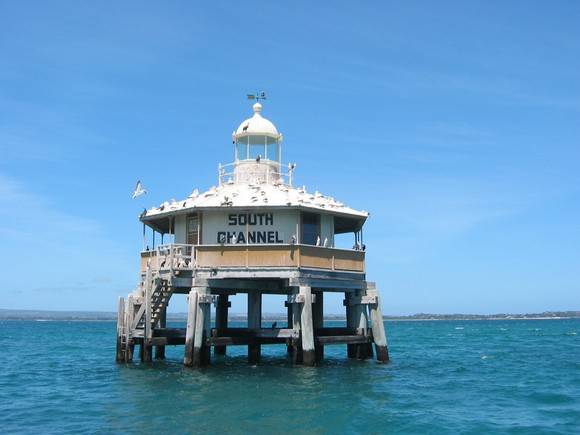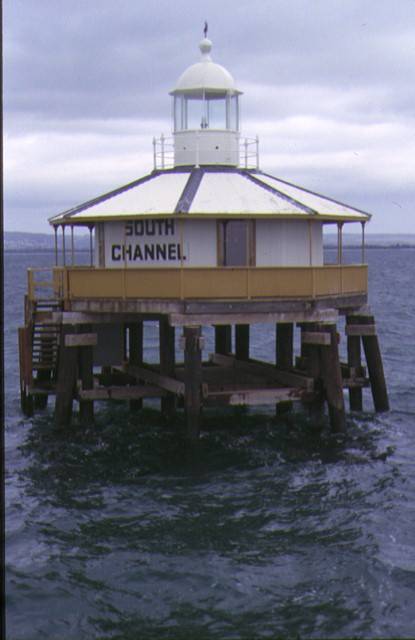| Back to search results » | Back to search page » |
|
SOUTH CHANNEL PILE LIGHT
LocationPORT PHILLIP BAY, UNINCORPORATED
File Number14/002459LevelRegistered |
|
Statement of Significance
What is significant? The South Channel Pile Light was constructed with a framework of timber screw-driven piles above which rests an octagonal platform. A single-storey octagonal timber building is mounted on the platform. This comprised the light-keepers’ quarters and included a bedroom, living-room, storeroom, and an external verandah. There were also two rainwater tanks for domestic use. A metal lantern, which housed the light, was mounted above the quarters and was accessed via a spiral staircase. Between 1905 and 1913, the light-keeper painted murals of ships on the interior walls of the quarters. In 1979, these were relocated to the Melbourne Maritime Museum (Polly Woodside). The quarters were manned by the light-keeper until bottled acetylene gas was introduced for lighting purposes in 1925. In 1985, after service of 111 years, the light was extinguished. In 1998, due to significant deterioration of the timber structure, the pile light and attached living quarters were removed from the timber piles. Following restoration, this was relocated on new timber piles at a position 3 kilometres off the Rye pier. The timber piles remain in their original position. How is it significant? Why is it significant? The South Channel Pile Light is architecturally significant as a rare early construction of channel lighting. Significant construction elements include the framework of timber screw-driven piles. Although now separated from its original pile and relocated, the South Channel Pile Light Quarters are historically and architecturally significant as a rare example of a light-keeper’s quarters, which demonstrates a now vanished way of life. The timber piles remain at their original location but with the quarters removed. This site is an important archaeological site. The South Channel Pile Light is also of technological (maritime) significance for its intact lantern, which is an important example of nineteenth-century light technology in Victoria. The purpose of channel lighting is rare in Victoria. The West Channel and South Channel pile lights are the only kind of their type in Australia.
The South Channel Pile Light was built between 1872 and 1874 to a design by the Public Works Department; the contract was let to Robert McColl. It was installed as a navigational aid for ships approaching Melbourne along the South Channel. It was installed in conjunction with the construction of the iron Eastern Lighthouse at McCrae, which together formed a leading navigational line along the South Channel. The South and the West Channels were the two major shipping channels for all vessels entering Port Phillip Bay on their way to Melbourne. The light operated continuously from 1874 until 1985, but was extinguished for a brief period at the height of the Russian scare in 1885.
The South Channel Pile Light is of historical, architectural and technological (maritime) significance to the State of Victoria. The original timber piles are of archaeological significance to the State of Victoria.
The South Channel Pile Light is historically and architecturally significant as a rare and relatively intact example of a pile light that serviced shipping in Port Phillip Bay. The South Channel and West Channel Pile Lights are the only surviving examples of the four manned pile lights that originally serviced ships entering Port Phillip Bay. These were integral to navigational operations along the South and West channels of Port Phillip Bay at a time of heavy traffic in shipping and when passage by sea represented the major form of transport to Melbourne from overseas and interstate.
[Online Data Upgrade Project 2004]
Group
Transport - Water
Category
Channel Marker





